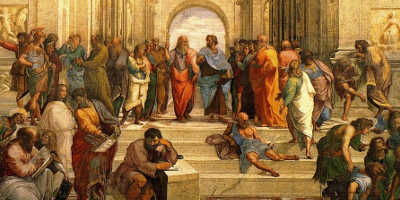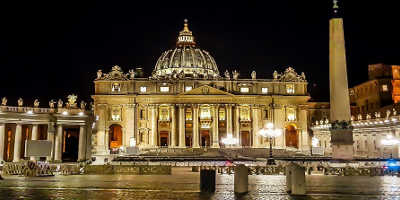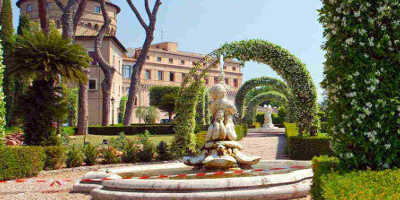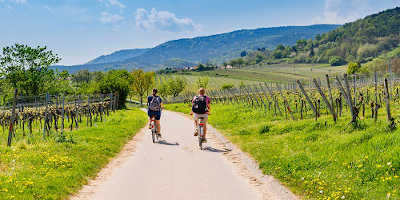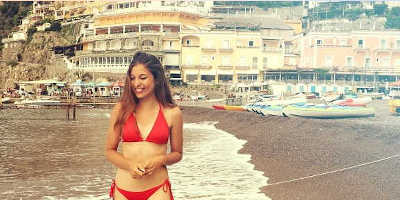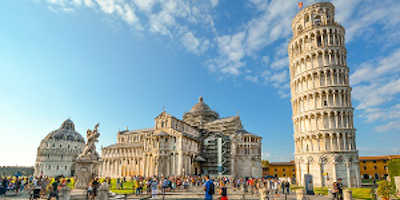Why is the Renaissance era so important?
Marking the transition from the Middle Ages to Modernity, the Renaissance era was perhaps the most important period of all time. But why?
The vibrant period of the European Renaissance era is famous worldwide. Most people will just think of the famed paintings of this era, but the Renaissance was much more than great art. Laying out the foundation for the European age of exploration, which lead to Europe’s global power. Its big-name discoveries, masterpieces, developments have gone down in history as some of the greatest creations on earth.
What is the Renaissance era?
It was a time immediately following the Middle Ages in European civilisation. The word ‘renaissance’ is derivative from the French word for ‘rebirth’, signifying how Europe came out of the dark ages, reawakening in art, culture, science, technology, and music. It was an incredible time of beauty, blossoming with creativity and curiosity. The Renaissance era also witnessed the discovery and exploration of new continents, the growth of commerce, and the inventions of innovations such as paper, printing, the mariner’s compass and gunpowder. To the scholars and thinkers of the day, however, it was primarily a time of the revival of Classical learning and wisdom after a long period of cultural decline and stagnation.
When did the Renaissance era begin?
Today, the Renaissance era is considered to have begun in the 14th century, but its earliest origins have been dated back as far as the 12th century. It is hard to decipher a specific year or date in which the Renaissance started and ended, as such changes to society and civilisation take time and can develop in different ways across the world, or, in this case, across Europe. The first record we have of scholars attempting to distinguish between two eras is in the 15th century, when scholars coined the term ‘Middle Ages’ to refer to the interval between the downfall of the Classical world and a revival of new thoughts and ideas. Events at the end of the Middle Ages, particularly in the 12th century, set in motion a series of social, political, and intellectual transformations that culminated the Renaissance. This included the rise of city-states, national monarchies, the development of national languages, and the breakup of the old feudal structures. At the time the spirit of the Renaissance was recognised as the rise of an intellectual movement called humanism. Humanism is a philosophical stance that emphasises the value and agency of human beings and generally prefers critical thinking and evidence over dogma or superstition. This thinking was influenced by the printing of little-known texts from early humanist authors, which spread similar thoughts and themes across Europe. Additionally, many scholars believe advances in international finance and trade also had an impact on the Renaissance, which can be supported by the wealth and prosperity of Florence where the Renaissance is thought to have started. Its rich inhabitants could afford to support budding artists, writers and politicians. One of the wealthiest and most well-known families of this period was the Medici family, who ruled Florence for more than 60 years and were famous backs of the movement.
Why is the Renaissance era so Important?
Now that we know a little more about what the Renaissance was and how it started, you might be wondering why is it so important? Remembered and marked throughout history as a significant period of change, it appears to stand out against the ages. Ultimately the answer to this can be seen in the art, literature and politics of the time which has influenced the way we live today. Whilst scholars may debate over the exact timing of the Renaissance, there is little dispute that the events of the period ultimately led to advances that changed the way people understood and interpreted the world around them. It led to the rise of geniuses like Leonardo da Vinci, Rene Descartes, Galileo, Dante, Milton, Shakespeare, Michelangelo and more. These names are still praised and credited today for giving us some of the best works of art and ideas ever produced. Without the Renaissance would these names have risen to prominence? And where would we be today without them? The Renaissance also saw within it a period known as the Age of Discovery, where voyagers launched expeditions to travel the globe, discovering whole new shipping routes to the Americas, India and the Far East, influencing our ideas further. Religion, of course, was still a dominant power, but with more people learning to read, write and interpret ideas, they began to closely examine and critique religion as they knew it.
Big-name masterpieces from the Renaissance era
Art is one of the most discussed sections of the Renaissance era. With famous artists such as Leonardo da Vinci, Michelangelo, Raphael, Botticelli, and Donatello all producing their famous masterpieces during this era. Leonardo da Vinci, although an inventor, scientist, writer and more, is most famous for his incredible world-famous paintings, such as the Mona Lisa and The Last Supper. Michelangelo is renowned for his work on some of Italian’s greatest treasures, including the Sistine Chapel’s frescos. Other incredible renaissance men that were talented in astronomy, philosophy, writing, and exploration include household names Galileo, Shakespeare, and Columbus. A theme which modern scholars find so interesting about the era is that art and science seemed to fuse together, almost seamlessly at times. Da Vinci, for example, incorporated scientific principles such as anatomy into their work, so he could recreate the human body with extraordinary precision. Artists also incorporated techniques like perspective into their work to add to their realism, adding depth and emotion. To see evidence of this wonderfully important and staggering era, head to Italy, the birthplace of High Renaissance.
As the era was set in Europe, your best bet is to travel there! Italy, in particular, is swarming with famous masterpieces, with the main areas to visit being Rome, Vatican City, and Florence. See the country’s incredible architecture throughout these three regions such as the celebrated St. Peter’s Basilica, as well as the Sistine Chapel. The spectacular buildings housing paintings and sculptures such as Michelangelo’s David, Raphael’s frescoes, as well as Caravaggio’s ‘The Calling of St Matthew.’ The Renaissance is one of the greatest eras for beauty and is well worth a visit to Italy!


